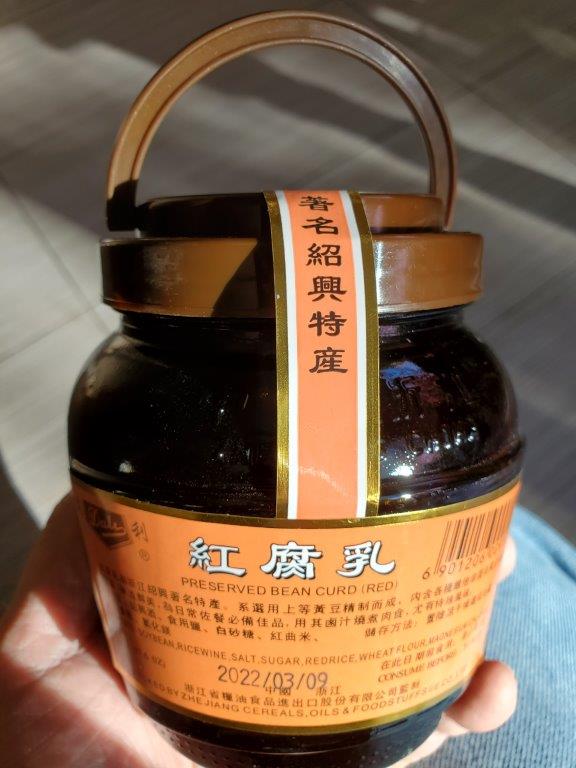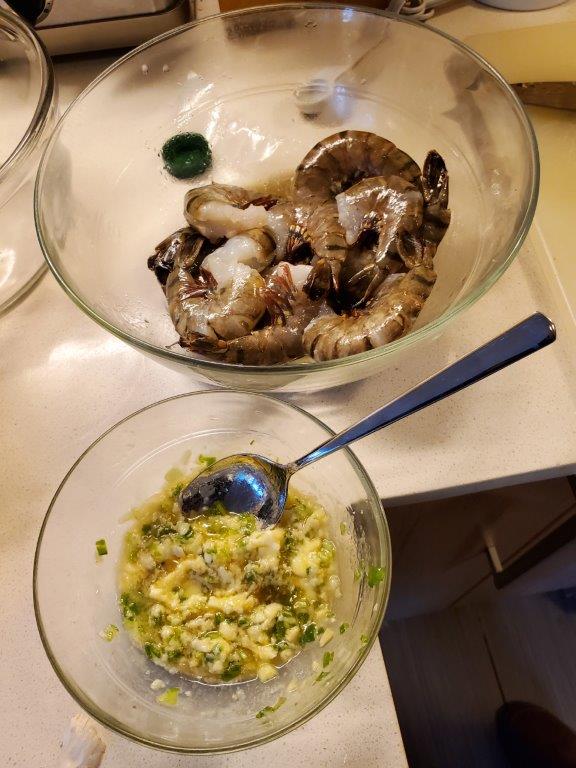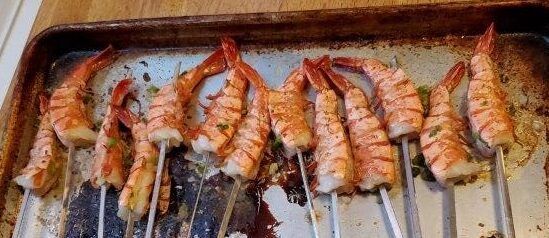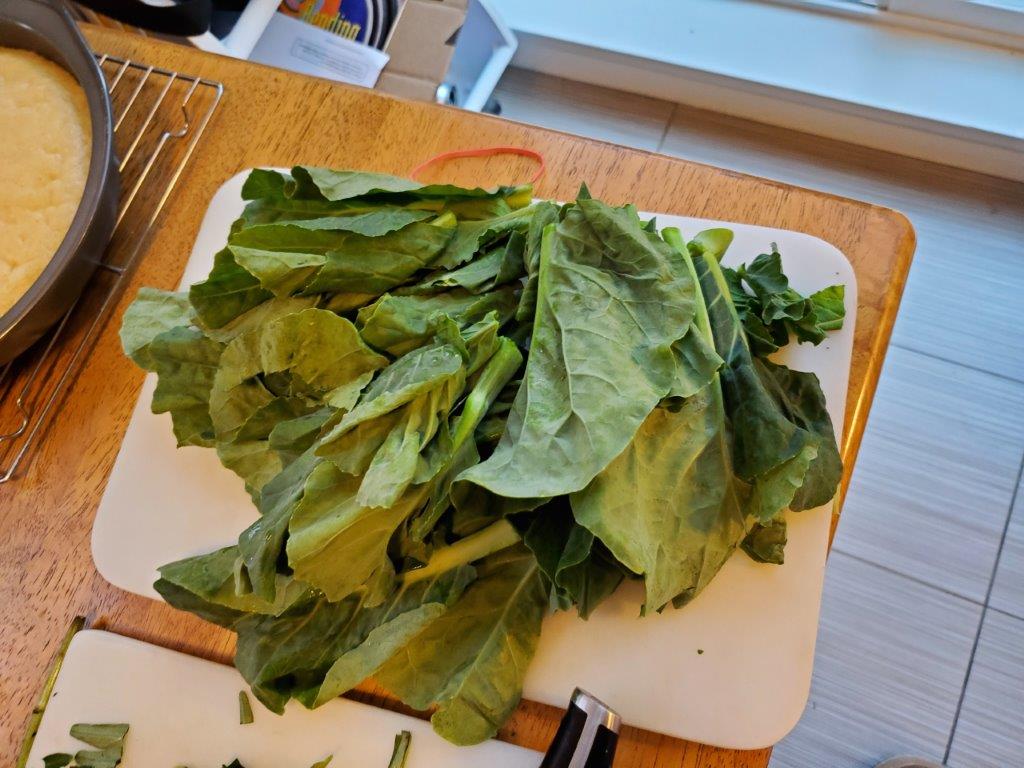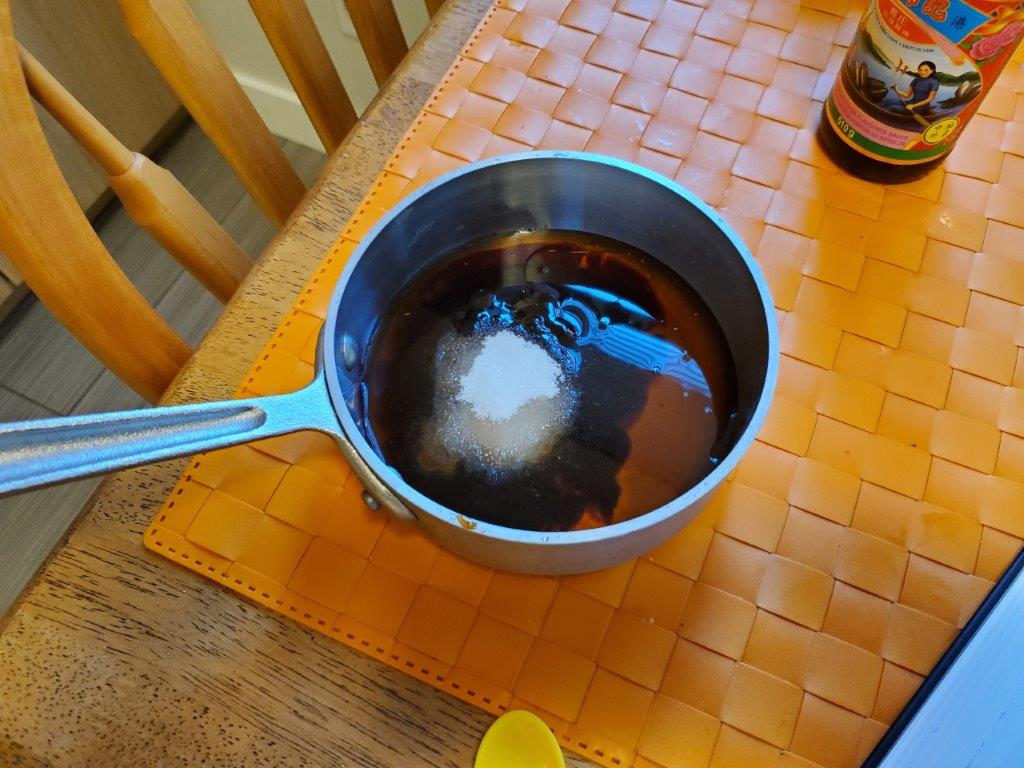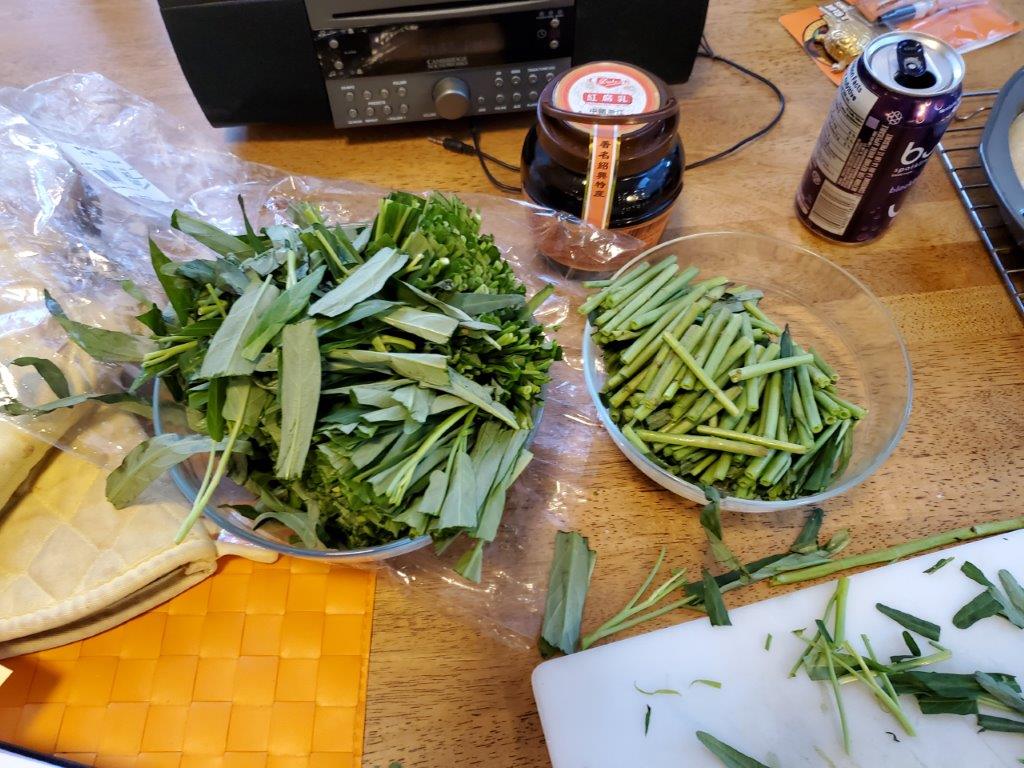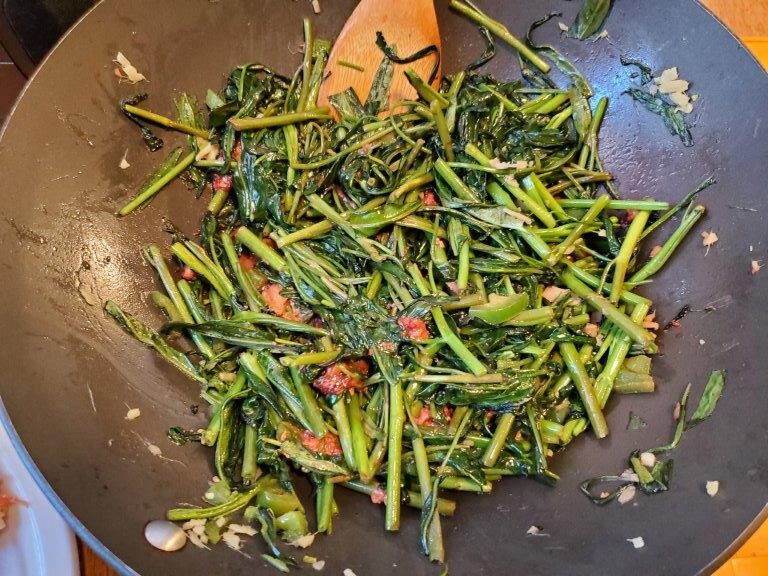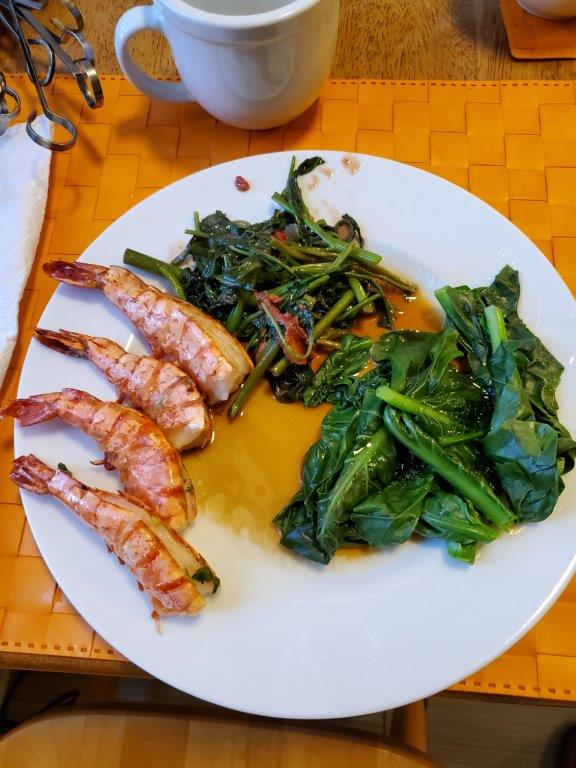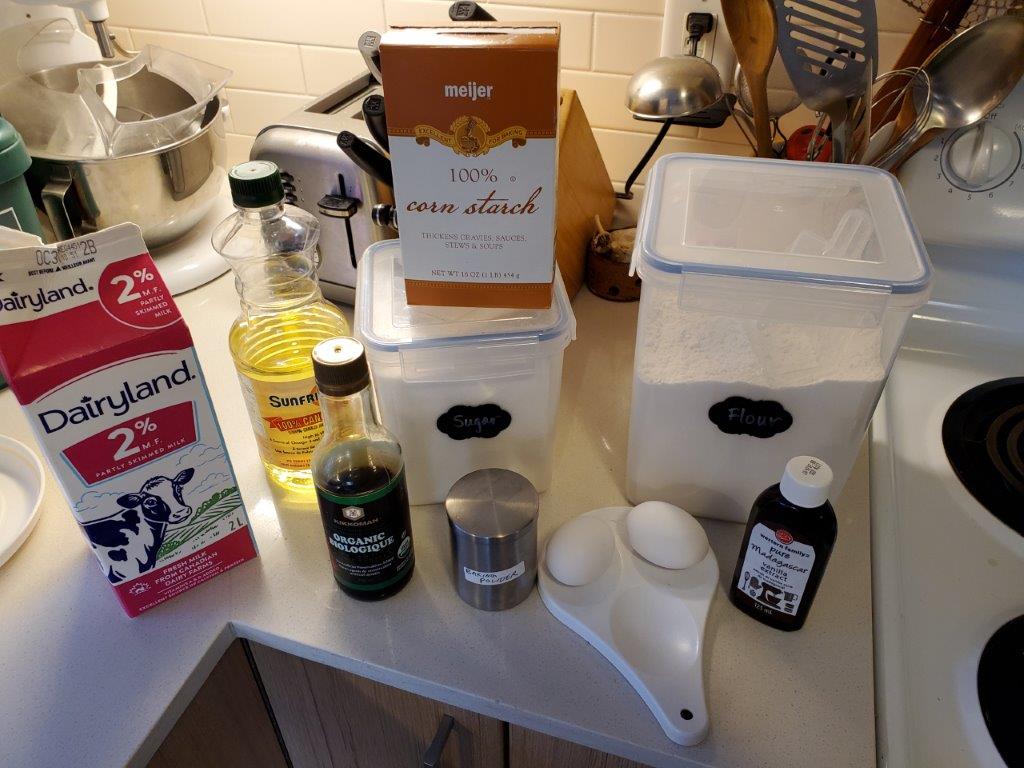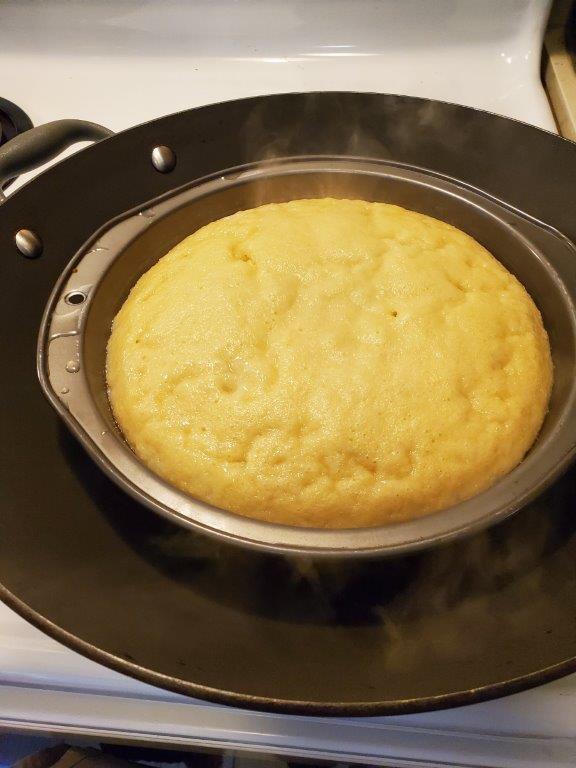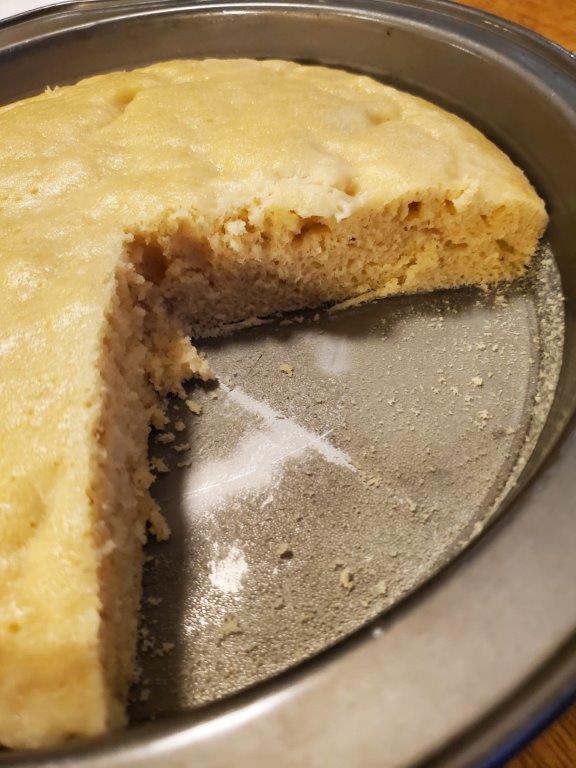As we continue our trek through the regions of China, this week we reach the southeast, which includes Guangdong province. “Canton” is an old, botched Romanization of Guangdong, so when we talk about “Cantonese” food, this is the area we mean. In addition to the Guangdong school, this area also includes Hong Kong and southern Fujian province, which is the origin point of a remarkably high percentage of owners of Chinese restaurants in North America.
Once again, the day was started with a trip to the Asian grocer, this time for several different kinds of greenery, as well as a beautiful glass jar of fermented bean curd. (More on that later.)
We’ve started getting in the habit of printing out our shopping list in both English and Chinese, and it makes it much simpler to communicate what it is we’re looking for. On this run, for example, the recipe in English called for “water spinach.” Asking a clerk for water spinach earned a blank look, but showing them a printout of “空心菜” got me a lovely bag marked with those characters as well as the Romanization “Ong Choy.”
So what’s for dinner tonight? Coastal areas have lots of seafood, of course, so we’ll be following last week’s fish dish with skewered shrimp. On the side, we’ll have two different vegetable dishes, and a sponge cake for dessert. All of these dishes cook very quickly, (except the cake) so the hard part was trying to make them all at once and get them to the table still warm.
Let’s get to it! First up, the shrimp. Although it’s easy to acquire fresh seafood around here, we had a bag of frozen tiger prawns already, and waste not want not. The prawns get a quick soak in Shaoxing wine and oil, while we make a compound butter with scallions, garlic, and fish sauce.
Next, the shrimp are threaded onto skewers. In a picture perfect cooking show world, we would carefully fill the vein cavities of the shrimp with a beautiful line of compound butter. In the real world, we just kinda smeared some on with our fingers, hoped for the best, and into the oven they went. They sure did look pretty when they came out, though.
So while those were cooking, time to make the veggies. The simpler of the two is Gai Lan or “Chinese Broccoli”. If you’ve been to a dim sum restaurant and seen a token plate of green vegetables among all the dumplings and pancakes, it was probably Gai Lan.
Preparation is simple – just a quick minute in boiling water and it’s ready to eat. It’s commonly topped with oyster sauce, which we mixed with sugar, rice wine, and sesame oil, which makes a sweet, rich dressing. (We should probably have taken a picture AFTER we stirred the ingredients together, but we were hopping at this point.)
Our other vegetable dish features that jar of fermented bean curd from earlier. Ong Choy has long, thin stems which have to be cooked slightly longer than the leaves, so they got chopped up and separated into different bowls. (Note that “Bublé” sparkling water is not a traditional ingredient, and was not used in this preparation.)
This one gets stir fried, with the ingredients going into the wok one at a time in cook time order: ginger, jalapeno pepper, stems, leaves, and bean curd. This Fujianese bean curd has a beautiful red color, a salty, funky aroma, and a texture a lot like feta cheese. I think we used a little too much relative to the amount of green stuff – it doesn’t look like much in the picture, but a little fermented curd goes a long way.
So to sum up – the stir fry time for this dish was about three minutes. The Gai Lan took about a minute to cook, and the shrimp only baked for 8. No wonder we were hustling to try and get them all done at once!
No complaints at all on the results, however! The salty, spicy ong choy, and the sweet oyster sauce on the gai lan were very different, and didn’t feel redundant at all. And shrimp full of butter and garlic is a common concept for a reason!
What’s for dessert? Well, we picked a sponge cake recipe from Hong Kong which is probably more influenced by European colonists than more traditional Chinese sources, but with a twist I’d never encountered before – the cake is steamed, rather than baked.
Ingredients are standard cake stuff – flour, water, eggs, soy sauce, vanilla, milk, sugar…
…wait. Soy sauce? That’s a little different, but in the end you couldn’t really taste it.
Into the wok with the cake (a phrase I have NEVER uttered before), and a ten minute steam produced a beautiful, light sponge cake.
Two slices later, and it looked like Pac Man, but that’s really more Japanese than Chinese.
So that’s three Chinese regions down, and two to go! Next up, my personal favorite, Sichuan, a cuisine we attempt regularly even when we’re NOT blogging about it, because it’s just so darn tasty.

